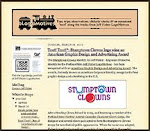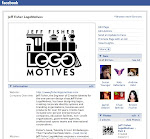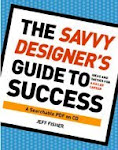The new logo (above middle), with the inclusion of a balloon graphic, projected much more of the fun and energy of the business - and the individuals running the company. The colors for the firm remained black and white.
With a later move to a new location, and introducing the business to the Internet, I was contracted to create yet another update of the company image was in order (above right). An unrelated local business had started using a “BOB” advertising campaign so Balloons on Broadway opted to move away from that reference while maintaining much of the previous logo’s appearance. Color was added, which could also translate well to a web presence and neon signage. The colors could be manipulated to signify various holiday promotions. Animation was also introduced to the image. The logo is still often presented in black and white, tying into the previous branding of the business.
The logo currently represents the balloon delivery and event planning business only. The retail operation has been renamed to better represent the products sold.
The Balloons on Broadway logo received a Bronze in the Summit Creative Awards. The identity is featured in The Big Book of Logos 3, New Logo World (Japan), Logo Design for Small Business 2, Logos from North to South America (Spain) and Logos Redesigned.
(Note: My new book, Identity Crisis!: 50 Redesigns That Transformed Stale Identities Into Successful Brands, contains case studies from 35 designers and firms located around the world. Learn more about the book on the Identity Crisis! blog.)
© 2007 Jeff Fisher LogoMotives


























